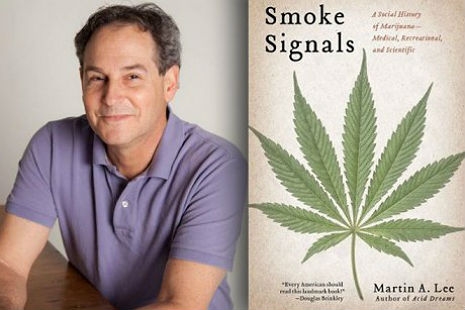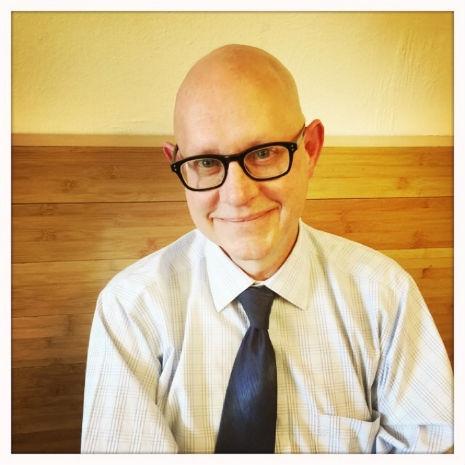
Smoke Signals: A Social History of Marijuana - Medical, Recreational and Scientific is the fascinating just-released chronicle of the chronic by Martin Lee, author of Acid Dreams, the best social history of LSD.
But Lee is more than a chronicler, he also co-founded Project CBD, which spearheaded the alternative cannabinoid movement in California to make medicinally important varieties of cannabis containing cannabidiol (CBD) more widely available.
Michael Backes, head of R&D for Abatin, caught up with Martin Lee to ask a few questions about cannabis and his new book.
Why was marijuana use criminalized? Was it the grand conspiracy of Hearst and DuPont, or more mundane?
There could have been a grand conspiracy of Hearst and DuPont, but I haven’t seen any proof. As far as I’m aware, there are no smoking gun docs indicating that Harry Anslinger, chief of the Federal Bureau of Narcotics, was acting at the behest of DuPont, the synthetic chemical combine, when he opted to launch his hyperbolic crusade to outlaw the evil weed in the 1930s.
This doesn’t mean that it didn’t happen that way, but I prefer hard evidence and sensible rationales. The notion that the Hearst syndicate – which was always short of paper for newsprint – fulminated against “marihuana” because the yellow press lord wanted to defeat a paper business competitor doesn’t pass muster, in my opinion. If anything, it would have been in Hearst’s interest to grow lots of hemp for paper. His anti-marihuana raving was racist and opportunistic to the core; ditto for Anslinger. That explains a lot.
When it comes to conspiracies – and, yes, they’re everywhere to the point of banality – I look first for the lowest common denominator, the mundane explanation, to see what’s plausible. I think Anslinger had sufficient motive and means to demonize marihuana in order to preserve and expand his bureaucratic fiefdom. He certainly had a key ally in Hearst, who was enamored of fascism and anti-Mexican ethnic cleansing. They were the main engines behind cannabis prohibition, which played out in ways that coincided with the business interests of DuPont, a client of Mellon Bank. Treasury Secretary Andrew Mellon was Anslinger’s boss and his uncle by marriage.
All these connections are suggestive and tantalizing, of course. But covert corporate machinations may count for less in this instance than garden-variety racism, endemic cultural bigotry, and mundane bureaucratic self-interest.
There a lot of great minor characters in the book, such as Lowell Eggemeier. Why doesn’t everybody know this guy?
Lowell Eggemeier, a Haight Ashbury peacenik, was one of the first, if not the first, to publicly protest cannabis prohibition when he walked into a San Francisco police station in 1964, lit a joint, and demanded to be arrested. His lone act of non-violent civil disobedience sparked the formation of a group called Lemar (Legalize Marijuana), which held the first public pro-pot demonstrations in America.
Eggemeier has become a historical footnote, a forgotten character in the cannabis saga. Many people have also forgotten that the pro-marijuana movement began not as a single-issue affair. From the outset, efforts to end pot prohibition were part of a broad movement for peace and social justice that drew inspiration from many sources and encompassed many causes in the 1960s. Therein lay its strength.
What do you feel are the most recent interesting developments in the use of cannabis as a medicine?
During the past two decades, scientific research into marijuana’s molecular pathways have opened up whole new vistas of understanding human physiology and biology. Much of this research validates the experience of medical marijuana patients. The discovery of the “endcannabinoid system,” which includes receptors in the brain and throughout the body that respond pharmacologically to marijuana, has revolutionary implications for medical science. Researchers are mining the rich pharmacopeia of the marijuana plant, which includes hundreds of medicinally active compounds, not just THC, the high causer.
Cannabidiol (CBD), for example, is a non-psychoactive component of marijuana that protects the brain against alcohol poisoning, shrinks malignant tumors, stimulates adult stem cell growth, and prevents the onset of diabetes in lab animals — without causing a “high.” CBD also counters the psychoactive effects of THC. What’s more, CBD has no known toxic side effects. CBD, in combination with other cannabis compounds, harbors enormous therapeutic potential.
Your social history of LSD, Acid Dreams has become a classic. How was writing the story of cannabis different?
I wrote Acid Dreams during the dark days of the Reagan era when legalizing marijuana was off the political radar. I wrote Smoke Signals at a time when the medical marijuana industry was in full bloom and polls showed half the country favored ending prohibition. Acid Dreams cut against the dominant cultural grain when it was published in 1986. Smoke Signals was propelled by a successful social movement and a burgeoning economic sector. That’s the main difference.
There are many similarities between how the books were structured and written. For Acid Dreams, I read through more than 10,000 pages of once-classified government documents, including many CIA documents, while researching the book. For Smoke Signals, I’ve read hundreds of peer-reviewed studies in an effort to understand and report on developments in cannabinoid science. The LSD story and the cannabis story overlap historically. Both are very rich culturally and both have significant esoteric elements (CIA secrets and obscure cannabis science). Both stories are dialectically driven – which is to say, they each entail thematic opposites: LSD was used as a weapon and a sacrament, a mind control drug and a mind expanding compound; and cannabis, by its very nature, is a dialectical plant containing components with opposite pharmacological and social effects.
Do you feel that the medical establishment overstates the harms of cannabis use?
Yes. According to the FDA, the DEA, and the National Institute on Drug Abuse, marijuana is a dangerous drug with no medical value. That’s the equivalent of saying that the moon is made of green cheese. Over one million people in California and other states are certified medical marijuana patients. Some are deathly ill; many others smoke pot for the same reason that tens of millions of Americans take Big Pharma meds for mild to moderate depression, anxiety, sleep problems, and attention deficit issues. What’s most striking about the grassroots medical marijuana experiment in America is that no deaths and no pattern of health problems are attributable to the use of the herb.
Are there actually powerful vested interests aligned against cannabis?
Yes, primarily law enforcement. The interests of Big Pharma and Big Booze have also been well served by prohibition, but these industries can co-exist with legal marijuana; the law enforcement bureaucracy, such as it is, cannot. Pot prohibition is the economic lifeline for police departments as well as marijuana growers. Seizure and forfeiture laws keep police department units solvent. Law enforcement is addicted to the drug war gravy train.
Care to venture a guess on when cannabis prohibition is going to end?
Hopefully before the polar ice caps melt . . . As Nietzsche said, “What is falling, we must still push.” What are medical marijuana and broader legalization advocates pushing against? Why has the Obama administration unleashed the dogs of the drug war in California and elsewhere? Why is the “Choom Gang” kid attacking the medical marijuana industry with such ferocity? Because it’s politically expedient in terms of shoring up support among cops and narcs at a time when the Obama Justice Department is trying to control the damage of the so-called Fast and Furious scandal involving errant weapons shipments to Mexican drug cartels. Marijuana prohibition will end when it’s no longer a useful vehicle for Machiavellian politicians and greed-heads.
Can Pot Treat Cancer Without The Devastating Effects of Chemotherapy? (an excerpt from Smoke Signals at AlterNet)
Martin will be reading from Smoke Signals: A Social History of Marijuana - Medical, Recreational and Scientific and signing books at Booksmith in San Francisco on August 29.
www.smokesignalsthebook.com








